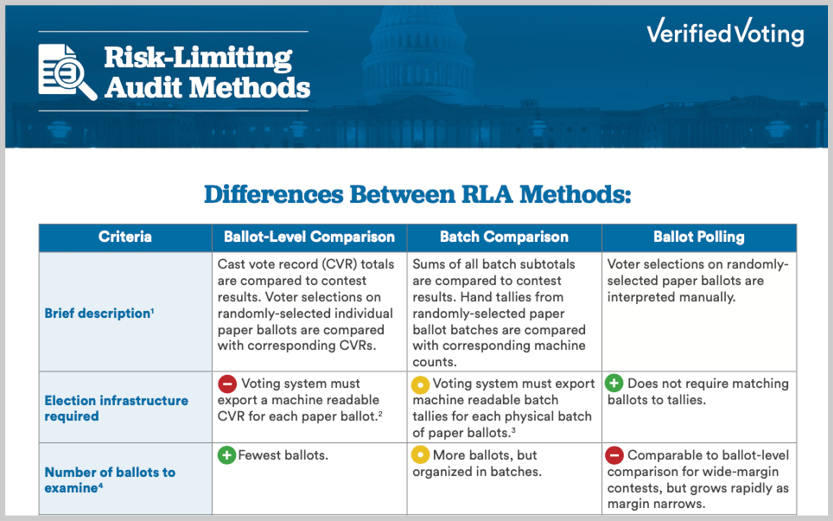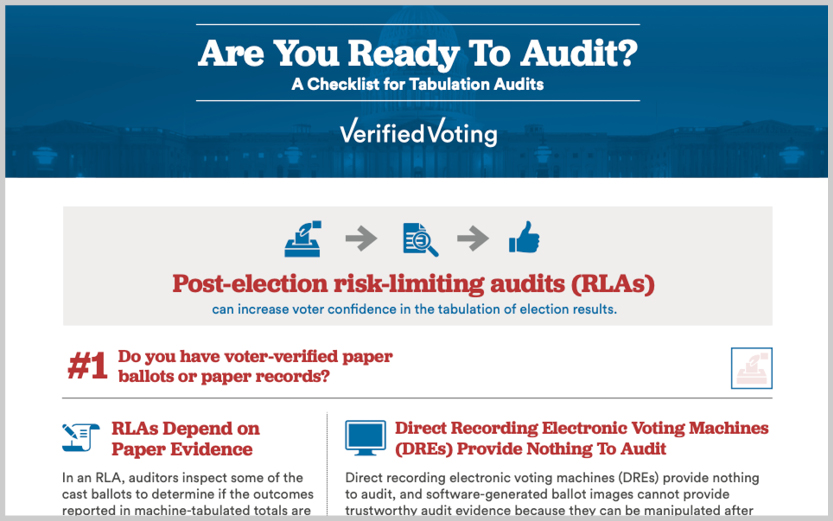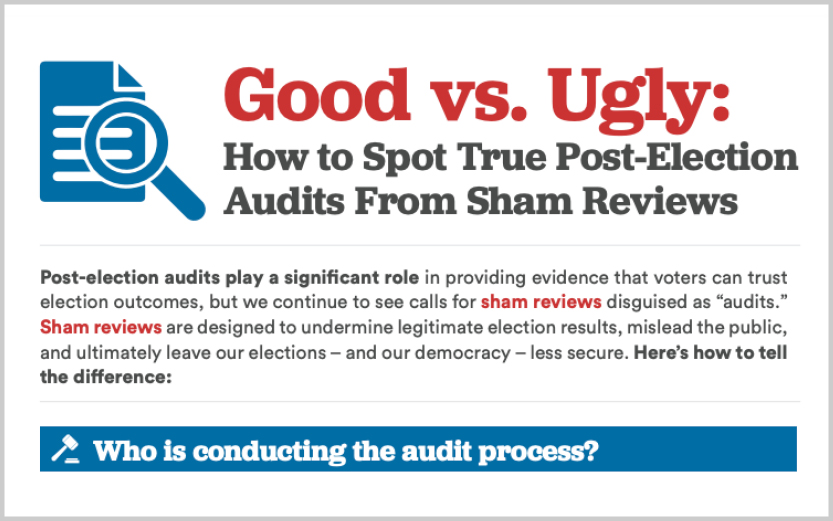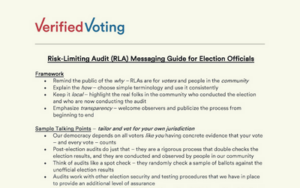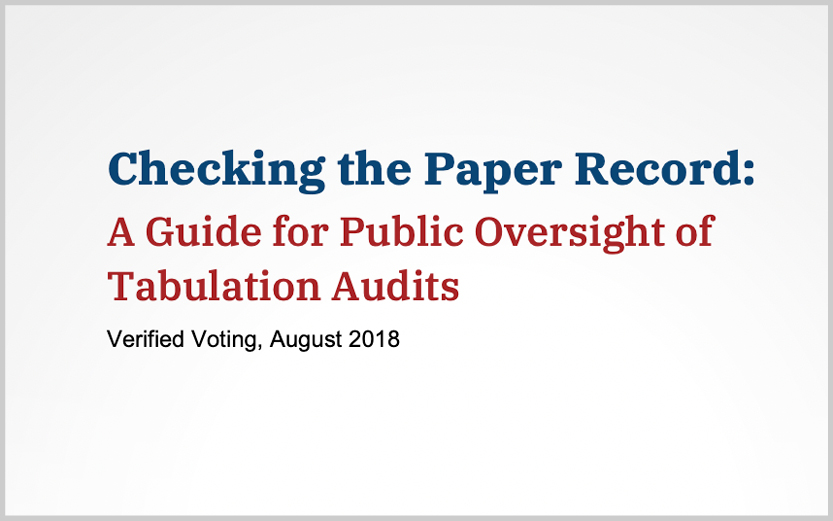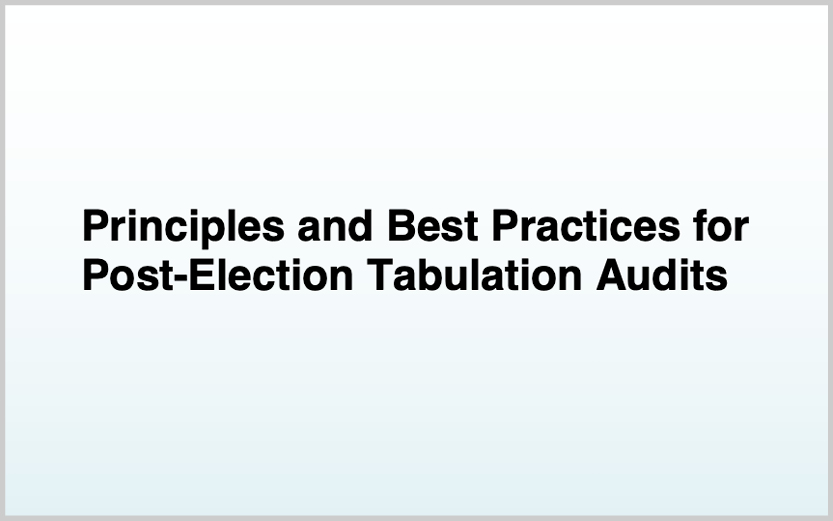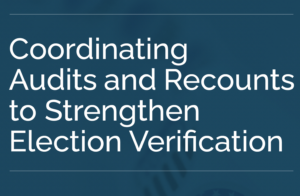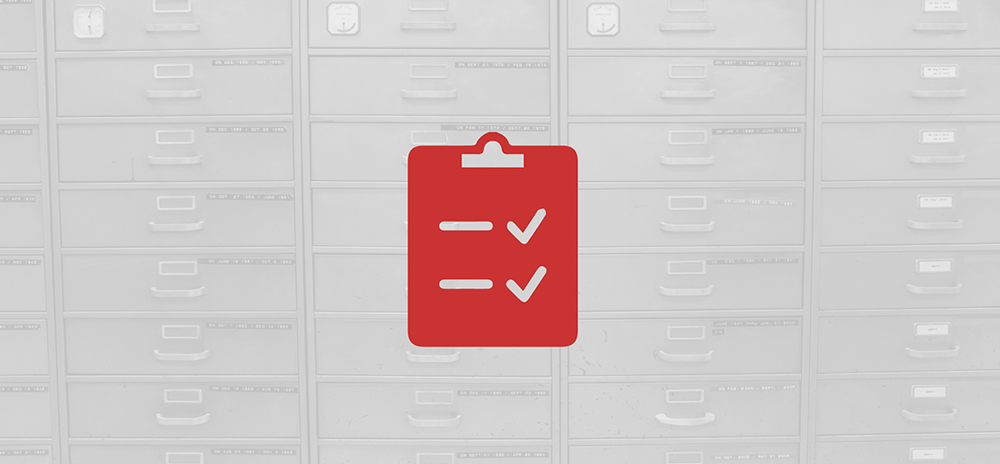
About Post-Election Audits
Well-designed post-election tabulation audits can provide solid evidence to support the reported election outcome.
When implemented alongside other best practices, post-election audits of paper ballots provide solid evidence for the initial election outcome when it is correct — and an opportunity to correct the outcome when it is not. In addition to confirming outcomes and detecting errors (whether accidental or intentional), good tabulation audits can deter hacking, malware, and fraud and help foster continuous improvement in elections administration. View our Post-Election Audits Map to see your state’s audit regulations, and read more about audits below.
Click here for the latest news from Verified Voting about Post-Election Audits.
Audit Publications
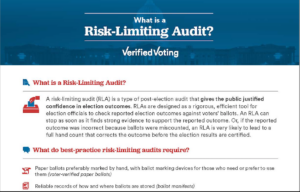 What Is a Risk-Limiting Audit?
What Is a Risk-Limiting Audit?
A quick overview of RLAs and a flowchart showing how they work.
Differences Between RLA Methods
Overview of three RLA methods: ballot-level comparison, batch comparison, and ballot polling.
Good vs. Ugly: True Audits vs. Sham Reviews
How to spot the difference between true post-election audits and sham reviews.
Risk-Limiting Audit Messaging Guide for Election Officials
How to talk to constituents, the press, and other key stakeholders about risk-limiting audits..
Principles & Best Practices
Details principles and best practices meant to guide the regulation and design of high-quality post-election audits.
Coordinating Audits and Recounts to Strengthen Election Verification
Explains how audits and recounts can work together to bolster public confidence.
Why Do a Tabulation Audit?
Because we can’t correct errors unless we know they happened.
Auditing can catch errors missed by other tests.
Logic and accuracy tests ensure machines are ready for election day, but intentional or accidental errors that occur after initial testing can go unnoticed.
Auditing provides a recovery plan for the vote count.
By preserving and then auditing voter-verified ballots, errors can be detected and corrected in a timely manner.
Auditing builds
voter confidence.
Routine tabulation audits ensure quality control in the tabulation process. Checking samples of voter-verified ballots gives voters assurance their ballots count.
Why Do a Risk-Limiting Audit?
RLAs strategically allocate resources while providing evidence-based assurance of contest outcomes.
RLAs avoid checking
ballots unnecessarily.
Risk-limiting audits base the number of ballots selected on the specifics of the contest. Contests with a wide margin can be audited with very few ballots, freeing up resources for closer contests. In general, risk-limiting audits can be conducted with a modest amount of effort.
RLAs are
statistically sound.
The American Statistical Association endorses and recommends risk-limiting audits. When risk-limiting audit procedures are followed, they give strong evidence to support the reported outcome (or trigger a recount).
RLAs are
flexible.
There are different types of risk-limiting audits, all of which provide statistical accuracy and efficiency. RLAs can adapt to various kinds of voting systems, as long as there are voter-verified ballots to audit.
Audit Law Database
The Verified Voting State Audit Law Database is a resource that describes state laws, regulations and procedures for post-election audits. This database was originally created and maintained by Citizens for Election Integrity Minnesota. The database migrated to Verified Voting in March 2017.
